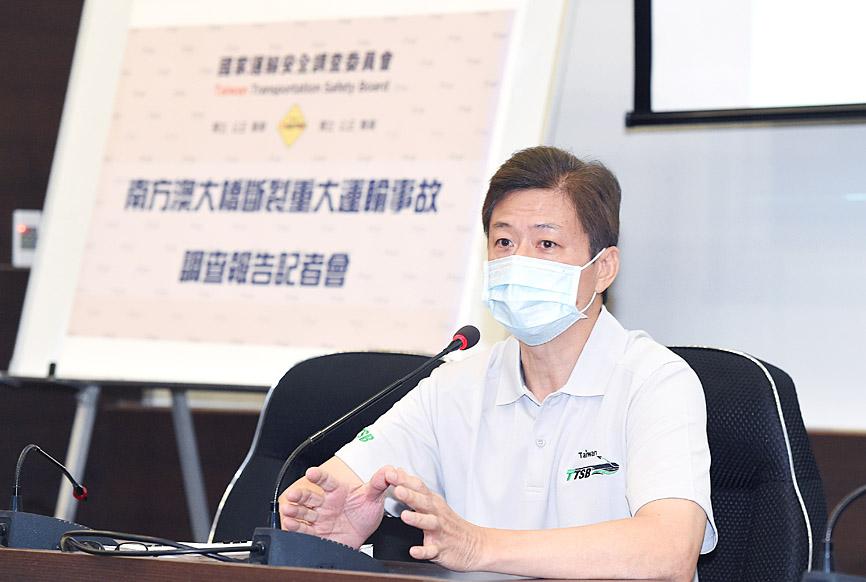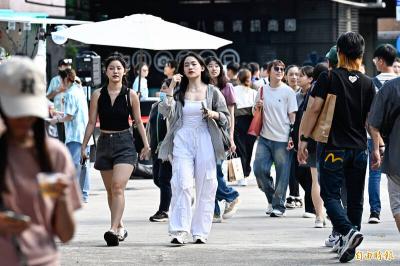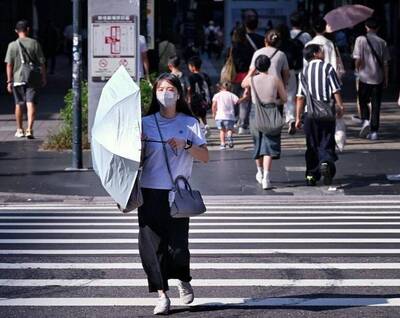Severe corrosion of stranded steel wires and a lack of inspections necessary for special bridges were the main reasons leading to the collapse of the Nanfangao Bridge (南方澳大橋) in Yilan County’s Port of Suao on Oct. 1 last year, an investigation by the Taiwan Transportation Safety Board showed yesterday.
The accident killed six people, injured 13 and damaged three fishing vessels moored under the bridge.
The board spent about one year investigating the cause of the accident before publishing the final report yesterday.

Photo: Liao Chen-huei, Taipei Times
The bridge was at a fishing harbor, which made it susceptible to salt and humidity, the report said.
As such, waterproof seam seals on the metal boxes at the divisional islands, as well as on tubes covering the steel cables, gradually hardened and cracked, which in turn caused rainwater to leak into the anchoring mechanism, it said.
“Anchors and the stranded steel wires on the bridge were immersed in salty water for a long period of time, corroding stranded steel wires,” the board said.
Before the accident, stranded steel wires at cable Nos. 10, 11, 12 and 13 on the bridge had corroded and broken, it found.
When a CPC Corp, Taiwan oil tanker truck drove past cable No. 10, the residual strength of the corroded stranded steel wires in cable No. 11 could not sustain the load and snapped, the investigation found.
Subsequently, corroded wires in cables Nos. 10, 12, 9 and 13 also broke, triggering the destruction of anchor heads at the remaining cables on the bridge.
The broken steel cables led to increased stress on the bridge’s steel girders, which eventually caused the bridge to collapse, the board said.
The bridge featured a double-fork, single-arch design, and its cables and anchorage systems were located in concealed places such as the arch, tubes, or steel girders, it said, adding that such a unique bridge required regular inspections to ensure the soundness of its structure.
However, before the accident, government regulations failed to state clearly the agencies that should be managing bridges.
Nor were there comprehensive guidelines to be followed when different agencies conducted inspections on special bridges like the Nanfangao Bridge, the board said.
Consequently, the bridge was only inspected seven times after it was built in 1998, during which inspectors only conducted visual inspections, the board said.
No inspections were conducted in the three years and seven months leading up to the collapse, it said.
The board said that it would send reports to the Ministry of Transportation and Communications as well as other agencies that need to maintain bridges, adding that they are required to respond to the results of the investigation within 90 days.
Deputy Minister of Transportation and Communications Wang Kwo-tsai (王國材) told reporters that the ministry has also completed its own investigation into the collapse, adding that it also budgeted NT$1.5 billion (US$52.05 million) to inspect and revamp bridges that are easily damaged.

Three Taiwanese airlines have prohibited passengers from packing Bluetooth earbuds and their charger cases in checked luggage. EVA Air and Uni Air said that Bluetooth earbuds and charger cases are categorized as portable electronic devices, which should be switched off if they are placed in checked luggage based on international aviation safety regulations. They must not be in standby or sleep mode. However, as charging would continue when earbuds are placed in the charger cases, which would contravene international aviation regulations, their cases must be carried as hand luggage, they said. Tigerair Taiwan said that earbud charger cases are equipped

Foreign travelers entering Taiwan on a short layover via Taiwan Taoyuan International Airport are receiving NT$600 gift vouchers from yesterday, the Tourism Administration said, adding that it hopes the incentive would boost tourism consumption at the airport. The program, which allows travelers holding non-Taiwan passports who enter the country during a layover of up to 24 hours to claim a voucher, aims to promote attractions at the airport, the agency said in a statement on Friday. To participate, travelers must sign up on the campaign Web site, the agency said. They can then present their passport and boarding pass for their connecting international

Temperatures in northern Taiwan are forecast to reach as high as 30°C today, as an ongoing northeasterly seasonal wind system weakens, the Central Weather Administration (CWA) said. CWA forecaster Tseng Chao-cheng (曾昭誠) said yesterday that with the seasonal wind system weakening, warmer easterly winds would boost the temperature today. Daytime temperatures in northern Taiwan and Yilan County are expected to range from 28°C to 30°C today, up about 3°C from yesterday, Tseng said. According to the CWA, temperature highs in central and southern Taiwan could stay stable. However, the weather is expected to turn cooler starting tonight as the northeasterly wind system strengthens again

Taiwan sweltered through its hottest October on record, the Central Weather Administration (CWA) said yesterday, the latest in a string of global temperature records. The main island endured its highest average temperature since 1950, CWA forecaster Liu Pei-teng said. Temperatures the world over have soared in recent years as human-induced climate change contributes to ever more erratic weather patterns. Taiwan’s average temperature was 27.381°C as of Thursday, Liu said. Liu said the average could slip 0.1°C by the end of yesterday, but it would still be higher than the previous record of 27.009°C in 2016. "The temperature only started lowering around Oct. 18 or 19